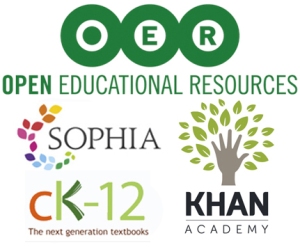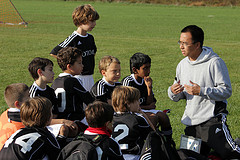Learning styles are involved in every classroom activity, from the simplest tasks to the most complex projects. Every if a teacher is unaware of learning styles, every teacher tends to lean towards one. In my classroom, I find that I typically teach with a more informal learning style. This doesn’t mean that this is the right way to teach, it just means that it works best for my personality, in my subject, for my students at my school.
There are three learning styles; formal, non-formal and informal. Formal is the most common and what most people think of when they think of traditional school. Formal means that the students have no control of either their objectives or how they are going to get there. The teacher assigns the objective and requires them to get their a certain way (Mocker & Spear, 1982, pg. 4). When I think of formal in a technology classroom, I think of the traditional birdhouse woodworking project. The teacher will provide the student with a model of what the birdhouse should look like and step by step direction in creating the birdhouse. Non-formal is when the learner controls the objective but not the mean (Mocker & Spear, 1982, pg. 4). An example of this could be in a woodworking class could be the students are allowed to make anything they want, as long as they use the table saw, router and drill press. There is no finish project they have to have, just as long as they use the tools required by the teacher. I have seen this approach used often in technology classrooms where a teacher wants to make sure the students learn a certain skill or tool. The last, and the one I use most often in my classroom, is informal. This is when the learner has an objective but they can go about it anyway they wish (Mocker & Spear, 1982, pg. 4). Going back to the birdhouse example. If the teacher assigned the same task of creating a birdhouse, showed them the model but did not provide step by step directions, this would be informal teaching. It is up to the student to create a plan to complete the objective.
The way my classroom is set up, informal teaching works best. In my course students are given a task, or objective but they are allowed to complete the task in anyway they wish. For example, the school I teach at is a magnet school that focuses on international leadership, so one of my objectives for my students may be pick a current issue in today’s world and create a way to make our students aware of the issue. This allows the student to decide how they are going to bring awareness to the issue. They can create posters, make a video, create a podcast or even a video game. How they go about it is up to them, but they have to make sure that the students at our school are aware of the issue. I like the informal approach because as I mentioned above, my school is about creating international leaders. International leaders often have objectives and tasks they need to complete but no plan to get it done. It also encourages creativity and innovation, two important things needed to be a leader.
 In my attempt to create a more informal classroom, I have recently started a redesign of my course. A large part of this redesign is to give the students more resources so when I do provide them with a open ended objective, they have plenty of options and ways to complete the task. This redesign wouldn’t be possible without modern technology. One of my recent discoveries is OERs. OER stands for Open Educational Resources. OERs are free of charge and allow people to learn a new set of skills (Strimel et.al., 2014, pg. 51). OERs are making it possible to teach skills to my students that I may not even fully understand. The technology field is so vast, it is impossible for a teacher to stay 100% up to date on everything. With OERs, if a student wants to learn a programming language the teacher hasn’t learned yet or a brand new piece of software, they can. The student can then use what they learned with the OERs, to complete the task and objective given by the teacher.
In my attempt to create a more informal classroom, I have recently started a redesign of my course. A large part of this redesign is to give the students more resources so when I do provide them with a open ended objective, they have plenty of options and ways to complete the task. This redesign wouldn’t be possible without modern technology. One of my recent discoveries is OERs. OER stands for Open Educational Resources. OERs are free of charge and allow people to learn a new set of skills (Strimel et.al., 2014, pg. 51). OERs are making it possible to teach skills to my students that I may not even fully understand. The technology field is so vast, it is impossible for a teacher to stay 100% up to date on everything. With OERs, if a student wants to learn a programming language the teacher hasn’t learned yet or a brand new piece of software, they can. The student can then use what they learned with the OERs, to complete the task and objective given by the teacher.
Lastly, in addition to learning styles, there are also learning theories. I am a strong believer that you can’t just use one learning theory in your teachings but as with learning styles, teachers will often lean towards one theory. I have learned due to much self-reflection that I typically lean towards a humanistic approach. The major reason why is I want my students to relate their learning not just towards my objectives and task but their objectives and missions in life (Huitt, 2013). It is my hope that with the addition of OERs, I can allow the students to learn in ways that are meaningful to their life goals and will benefit them in ways I couldn’t even imagine for them.
References
3W. [Logos]. Retrieved from http://www.3wdigitaleducation.com/wp-content/uploads/2012/04/OERLogos2.jpg
Huitt, W. (2013, December). Summary of theories relating to learning and development. Educational Psychology Interactive. Valdosta, GA: Valdosta State University. Retrieved [date], from http://www.edpsycinteractive.org/topics/summary/lrndev.html
Mocker, D. W., & Spear, G. E. (1982). Lifelong Learning: Formal, Nonformal, Informal, and Self-Directed. Information Series No. 241.
Strimel, G. g., Reed, P. m., Dooley, G. g., Bolling, J. p., Phillips, M. j., & Cantu, D. d. (2014). Integrating and Monitoring Informal Learning in Education and Training. Techniques: Connecting Education & Careers, 89(3), 48-54.





 traditional classroom setting such as a dance choreographer or a sports coach yet the information provided is comprehensive and worded eloquently so you leave reading each chapter understanding what you have to do in your field to make the principle work. Although I will not go into each principle, my three favorite principles of his were number one, number two and number six.
traditional classroom setting such as a dance choreographer or a sports coach yet the information provided is comprehensive and worded eloquently so you leave reading each chapter understanding what you have to do in your field to make the principle work. Although I will not go into each principle, my three favorite principles of his were number one, number two and number six.